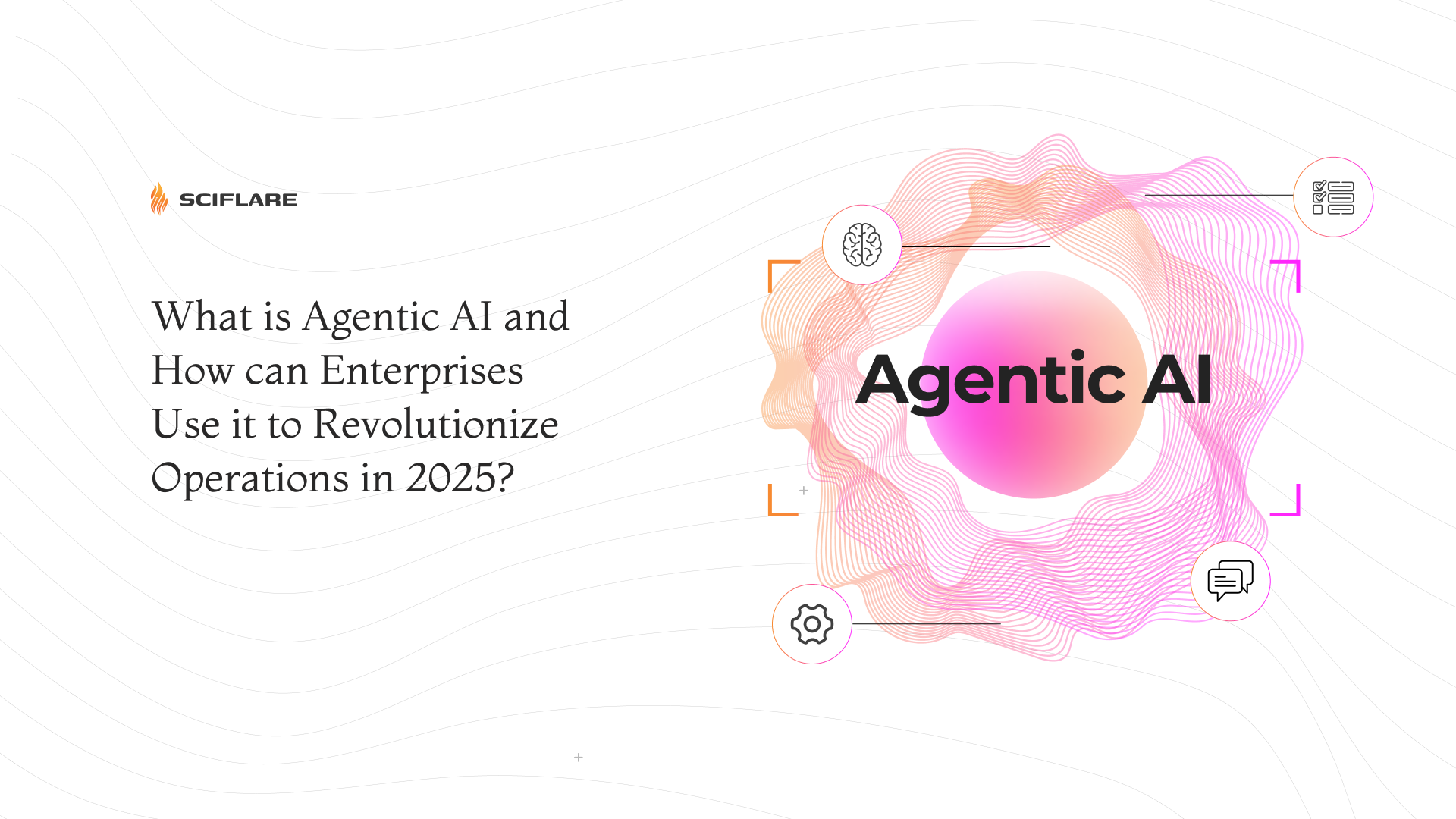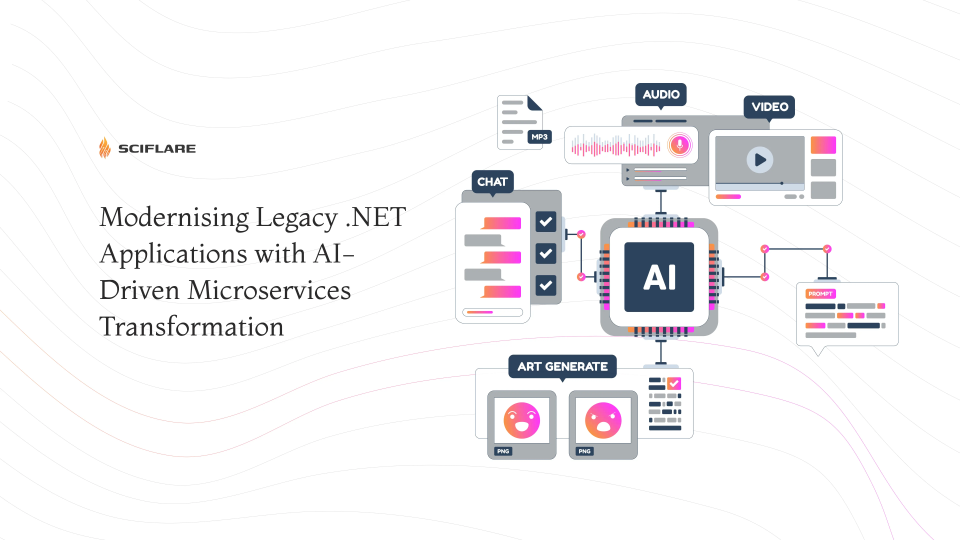
GenAI in FinTech: Enabling the Next Wave of Digital Transformation
Written by: Shiva Kumaran S
Introduction
Digital transformation for FinTech firms is no longer limited to traditional automation. At a time when FinTech firms face multiple risks like fraud detection, regulatory scrutiny, compliance gaps, and customer churn, GenAI presents the next frontier of innovation for the industry. Not only can it enable digital transformation in its true sense for FinTech firms, it can solve real and pressing problems that risk the competitiveness, profits, and credibility of FinTech firms. From fraud detection, compliance, and personalised customer experiences, GenAI adoption has evolved from a tech upgrade to a survival strategy for FinTech firms after the RPA-enabled first wave of digital transformation. Read this blog to find out how.
The FinTech and BFSI sectors are at a crucial inflection point. With growing regulatory scrutiny, increasingly sophisticated fraud schemes, and digitally native customers demanding seamless experiences, traditional systems are showing their limitations. While RPA and rule-based automation provided the first wave of digital transformation, it is Generative AI (GenAI) that is enabling the next leap.
GenAI, with its ability to learn, adapt, and generate human-like responses, is moving beyond chatbots and content creation. In the context of FinTech, it is revolutionizing compliance, fraud management, and hyper-personalized customer engagement—paving the way for faster, smarter, and more resilient financial systems.
Why GenAI Matters in FinTech
According to a report by Grand View Research, the global Gen AI in fintech market is projected to reach USD 9.87 billion by 2030, growing at a CAGR of 36.1% from 2023 to 2030. The abundance of data generated in this industry by each financial interaction offers rich insights into customer behavior, market trends, and financial patterns. Not only can GenAI in fintech convert this data into actionable insights, it can also successfully train on these large datasets that have not been utilized previously. The rising availability of this rich industry data is one of the primary reasons why Generative AI adoption is on the rise for FinTech firms.
Its ability to learn from experience, adapt to evolving circumstances and customer needs, and generate human-like responses is revolutionizing FinTech with better risk management, compliance checks, and customer satisfaction capabilities. Additionally, Generative AI can facilitate better stress testing and risk modeling by generating synthetic data to simulate diverse financial scenarios.
With regards to customer experience, Generative AI can closely analyze customer data to offer tailored financial recommendations and deliver hyper-personal relevance to boost user engagement and retention.
How FinTech is Adapting to Digital Transformation
Persistent Challenges in the BFSI Sector
While tech adoption in the BFSI sector has shown signs of growth, its complete potential is yet to be realized with future-proof digital transformation. Stalled growth in the BFSI sector can be seen in the form of data silos, escalating operational costs, customer churn, and the ultimate failure to scale. This affects the BFSI sector with the following problems:
Resource-intensive Compliance: With compliance frameworks like GDPR, AML, KYC, and PCI-DSS constantly evolving, staying compliant is more difficult than ever. The race is not just against evolving regulatory measures and their uncertainty, but also legacy FinTech systems that complicate the process of staying compliant. Adding to this complexity, siloed data and limited automation make compliance a resource-intensive function for enterprises rather than an agile and seamless growth function that AI compliance automation can offer.
Fraud Sophistication: The BFSI sector is grappling with AI-driven fraud sophistication threats like phishing, synthetic identity fraud (attackers combining fabricated or false data with real data to create duplicate identities), and customer behavior mimicking that conventional detection systems fail to identify, leading FinTech firms to incur large financial losses, regulatory penalties, and loss of customer trust. This signals the need to manage the intelligence of fraud systems with equally intelligent safety measures.
Digital-First Customer Expectations: With nearly every aspect of life being digitized, customers expect the same efficiency from FinTech services. As such, digital-first enablement, including personalized services, 24*7 access, instant account setup, and omnichannel interactions, form the basic expectations of customers. Legacy FinTech systems fail to evolve with these evolving customer needs and stall desired growth for FinTech firms.
FinTech leaders are now exploring AI-driven strategies that go beyond dashboards and automation scripts to create dynamic, self-improving systems that eliminate the above problems from the core.
The Role of GenAI in Modern Banking & Finance
GenAI in Fintech and banking has redefined how financial institutions engage with customers, streamline operations, and eliminate complex challenges to unlock revenue. Going beyond traditional automation, Gen AI helps financial institutions to utilize and analyze vast datasets, simulate actual financial scenarios, and generate real-time insights for quicker and accurate decision-making. Discussed below are ways in which GenAI is helping financial institutions solve their long-standing and most pressing problems:
AI Compliance Automation and Regulatory Reporting
Traditional Pitfall: Most legacy compliance tools are rigid and have little to no adaptability to evolve with regulatory frameworks. Their rule-based frameworks and siloed data processing add to the complexity of growing at the pace of regulatory frameworks and identifying complex financial crimes. These tools often need manual intervention, leading to risks of delayed responses and human error.
How Gen AI solves this:
Regulatory compliance is one of the most documentation-heavy and error-prone domains in finance. GenAI simplifies this by:
Parsing and interpreting complex regulatory texts.
Automating the creation of audit-ready reports.
Enabling dynamic risk modeling with real-time anomaly detection.
Flagging non-compliance patterns proactively.
Answering auditor questions with natural language explanations.
Tracking updates from regulators (e.g., FATF guidelines, SEBI circulars) in real-time.
Benefits for enterprises:
Transition from static systems to adaptive intelligence.
Proactive adjustment to evolving policies and regulatory frameworks.
Reduction in compliance costs with automated monitoring, auditing, and documentation.
Eliminating regulatory penalties with faster and accurate compliance management systems.
Safeguarding customer trust with enhanced fraud detection.
Resilient, scalable, and future-ready compliance management.
Example: A regional NBFC used GenAI to automate its periodic compliance filings. This reduced human effort by 60%, while ensuring all regulatory nuances were captured precisely and updated in real-time.
Real-world Note: The Monetary Authority of Singapore (MAS) has already encouraged RegTech and AI-based tools to improve ongoing compliance monitoring in APAC. GenAI will only accelerate this shift globally.
Fraud Detection with AI
Traditional Pitfalls: Legacy fraud systems rely on rules and blacklists, which struggle with novel fraud vectors. Their major limitation lies in missing sophisticated fraud tactics like multi-layered laundering and synthetic identities, while generating high false positives, burdening compliance terms, and delaying genuine transactions. Additionally, unstructured data makes it difficult to get a unified understanding necessary for identifying fraud patterns and hidden correlations.
How Gen AI solves this:
Continuously learning from transaction data to identify anomalies
Generating synthetic fraud scenarios to train models
Offering explainable AI insights for investigators
Monitoring behavioral biometrics to detect fraud in real-time
Powering AML (Anti-Money Laundering) alerts based on entity relationships
Modern Approach: GenAI tools can be paired with graph neural networks (GNNs) to detect coordinated fraud rings or mule accounts that bypass siloed rules.
Benefits for enterprises:
Adaptive detection in real-time immunizes the organization from fraud attempts and financial losses.
Automated detection accelerates response times and minimizes fraud exposure.
Cost-efficient operations with automated fraud detection, minimizing manual intervention.
Enhanced fraud detection minimizes customer churn and boosts customer loyalty.
Automated detection generates detailed audit trails to simplify compliance and avoid hefty penalties.
Example: A digital payments startup integrated GenAI models to flag high-risk behaviors such as account takeovers and mule accounts. The system reduced false positives by 30% and improved detection accuracy significantly.
FinTech Customer Personalization at Scale
Traditional Pitfall: Traditional fintech customer service usually adopts a one-size-fits-all approach for all customers, leading to limited personalization, longer response times, and increasing frustration. Legacy chatbots offer scripted responses with limited relevance to evolving customer queries. With the growth in the customer base, human customer service resources are overwhelmed and fail to offer instant and accurate responses to digital-first customers.
GenAI enables BFSI firms to create intelligent, context-aware interactions:
Real-time product recommendations based on behavioral insights.
Hyper-personalized c ommunication across email, chat, and voice.
Adaptive onboarding flows based on customer persona.
Auto-generated responses for customer support in natural tone.
Benefits for enterprises:
Boost in customer engagement, retention, and loyalty with faster and personalised responses.
Increased opportunities for cross-selling and upselling with context aware suggestions.
Reduction in customer support costs with Gen AI handling a large volume of queries.
Consistent customer personalisation at scale, enabling enterprises to deliver relevance to millions of users.
Example: A neobank deployed GenAI to power multilingual virtual agents that could understand and respond to user intents in real time. This boosted customer satisfaction scores by 25% within three months.
Benefits of GenAI in FinTech Transformation
The tangible benefits of GenAI adoption in BFSI include:
Operational Efficiency: Reduced manual intervention in compliance and customer support
Cost Optimization: Significant savings in fraud-related losses and audit overheads
Speed: Faster regulatory reporting and quicker issue resolution
Customer Trust: Personalized engagement builds loyalty and improves retention
Market Agility: Financial firms can test and iterate products faster using AI-generated user insights
Scalability: GenAI platforms scale across departments without needing line-by-line configuration
Preparing for AI-Ready FinTech Ecosystems
For FinTechs planning to adopt GenAI, here’s a practical roadmap:
Start with a Pilot: Identify one use case (e.g., suspicious transaction reporting) and test GenAI models.
Ensure Data Readiness: Clean, labeled data is essential for GenAI success.
Involve Compliance Teams Early: GenAI decisions must be explainable and auditable.
Build Responsible AI Governance: Address fairness, accountability, and transparency (FAT).
Integrate with Existing Infrastructure: Use APIs and microservices to plug into current systems.
Evaluate AI Ethics Continuously: Ensure models do not reinforce biases in lending or underwriting.
Invest in the Right Tech Stack:
LLM orchestration platforms (e.g., LangChain, Haystack)
Cloud-native architecture (AWS/GCP/Azure)
Versioned model registries and pipelines
Upskill Your Teams:
Prompt engineers, compliance specialists with AI literacy
Collaboration between product, legal, and data teams
How It Works: Implementation Roadmap
To operationalize GenAI adoption, FinTech leaders can follow this structured roadmap:
Pilot a focused use case – Begin with a high-impact domain (e.g., compliance reporting or fraud detection) to validate outcomes and ROI.
Ensure clean and labeled financial datasets – Data quality directly impacts model accuracy and regulatory acceptance.
Co-create AI models with compliance oversight – Involve legal and risk teams during design to ensure explainability and audit readiness.
Use APIs to integrate into legacy systems – Adopt modular, API-first architecture for seamless interoperability.
Monitor performance, fairness, and explainability – Continuously evaluate AI outputs for accuracy, bias, and transparency.
Industry Snapshot: AI Readiness in BFSI
According to a recent Deloitte survey, 72% of BFSI leaders believe AI will be the most disruptive technology in the next three years. However, only 40% have mature AI strategies in place—highlighting a major opportunity gap for early adopters.
Mini Case Study: Provident Bank
Provident Bank sought to improve compliance monitoring and customer engagement. By using GenAI analytics, it streamlined regulatory reporting, strengthened fraud detection, and delivered personalized product recommendations — reducing compliance overhead while boosting customer trust.
Industry Scenario: Mid-Tier Digital Wallet Provider
A mid-sized digital wallet platform operating across Southeast Asia aimed to reduce churn and improve real-time support efficiency. By adopting GenAI-powered behavioral models, they were able to:
Predict high-risk churn users using transaction and sentiment signals
Trigger automated retention offers personalized to spending behavior
Deploy multilingual GenAI agents for customer support queries
As a result, the provider achieved a 38% increase in campaign conversions and reduced support response times by 42%.
Challenges & Risks in Adopting GenAI in FinTech
While GenAI offers massive upside, BFSI firms must address several key challenges:
Explainability and Auditability: Financial decisions must be transparent. Black-box GenAI models may not meet audit or regulatory scrutiny.
Bias and Fairness: If models are trained on biased data, they can reinforce discrimination in lending or underwriting.
Regulatory Uncertainty: Different geographies have evolving AI rules. India, for instance, may adopt its own version of the EU AI Act.
Security & Privacy: Sensitive financial data must be protected during training and inference.
Hallucinations: LLMs can occasionally generate false outputs, which is risky in regulated domains.
Mitigation Best Practices:
Use human-in-the-loop (HITL) review for high-stakes decisions
Maintain detailed audit logs of AI outputs
Use fine-tuned models on domain-specific, high-quality data
Monitor model drift and continuously retrain with feedback loops
Conclusion: GenAI Is No Longer Optional
In a landscape defined by constant change and rising expectations, GenAI offers a decisive edge for FinTech and BFSI enterprises. From meeting compliance mandates to mitigating fraud and building lasting customer relationships, GenAI transforms how financial services operate at the core.
According to McKinsey, GenAI could unlock $200B–$340B in annual value for the BFSI industry by 2030. The earlier you adopt, the greater your competitive moat.
FAQs
What is GenAI’s role in FinTech compliance?
GenAI automates the interpretation of regulations, helps generate audit reports, and ensures ongoing compliance by flagging risks in real-time.
How does AI improve fraud detection in financial services?
By learning from transaction patterns and generating synthetic fraud data, GenAI improves detection accuracy and reduces false positives.
Can GenAI personalize banking experiences?
Yes, GenAI powers hyper-personalized banking via AI chatbots, dynamic onboarding, and predictive product suggestions tailored to user behavior.
What steps should FinTechs take to adopt GenAI responsibly?
Start with a focused use case, ensure data quality, involve compliance teams, and set up ethical AI governance for responsible adoption.
What are the risks of using GenAI in BFSI?
Key risks include bias in AI decision-making, lack of explainability, regulatory ambiguity, and over-reliance on autonomous systems. Mitigating these requires transparent models, robust testing, and human oversight.




